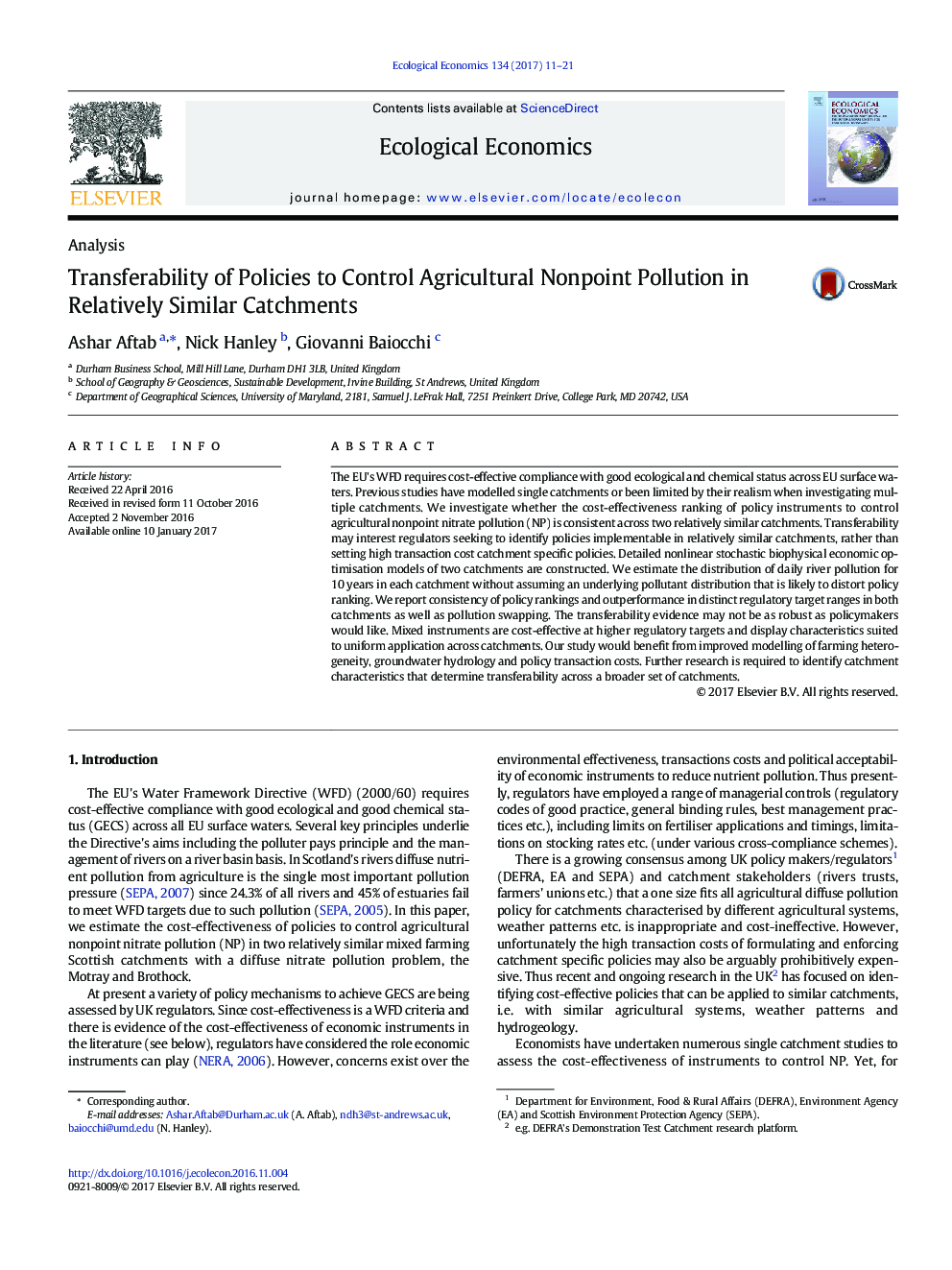| Article ID | Journal | Published Year | Pages | File Type |
|---|---|---|---|---|
| 5048677 | Ecological Economics | 2017 | 11 Pages |
The EU's WFD requires cost-effective compliance with good ecological and chemical status across EU surface waters. Previous studies have modelled single catchments or been limited by their realism when investigating multiple catchments. We investigate whether the cost-effectiveness ranking of policy instruments to control agricultural nonpoint nitrate pollution (NP) is consistent across two relatively similar catchments. Transferability may interest regulators seeking to identify policies implementable in relatively similar catchments, rather than setting high transaction cost catchment specific policies. Detailed nonlinear stochastic biophysical economic optimisation models of two catchments are constructed. We estimate the distribution of daily river pollution for 10Â years in each catchment without assuming an underlying pollutant distribution that is likely to distort policy ranking. We report consistency of policy rankings and outperformance in distinct regulatory target ranges in both catchments as well as pollution swapping. The transferability evidence may not be as robust as policymakers would like. Mixed instruments are cost-effective at higher regulatory targets and display characteristics suited to uniform application across catchments. Our study would benefit from improved modelling of farming heterogeneity, groundwater hydrology and policy transaction costs. Further research is required to identify catchment characteristics that determine transferability across a broader set of catchments.
